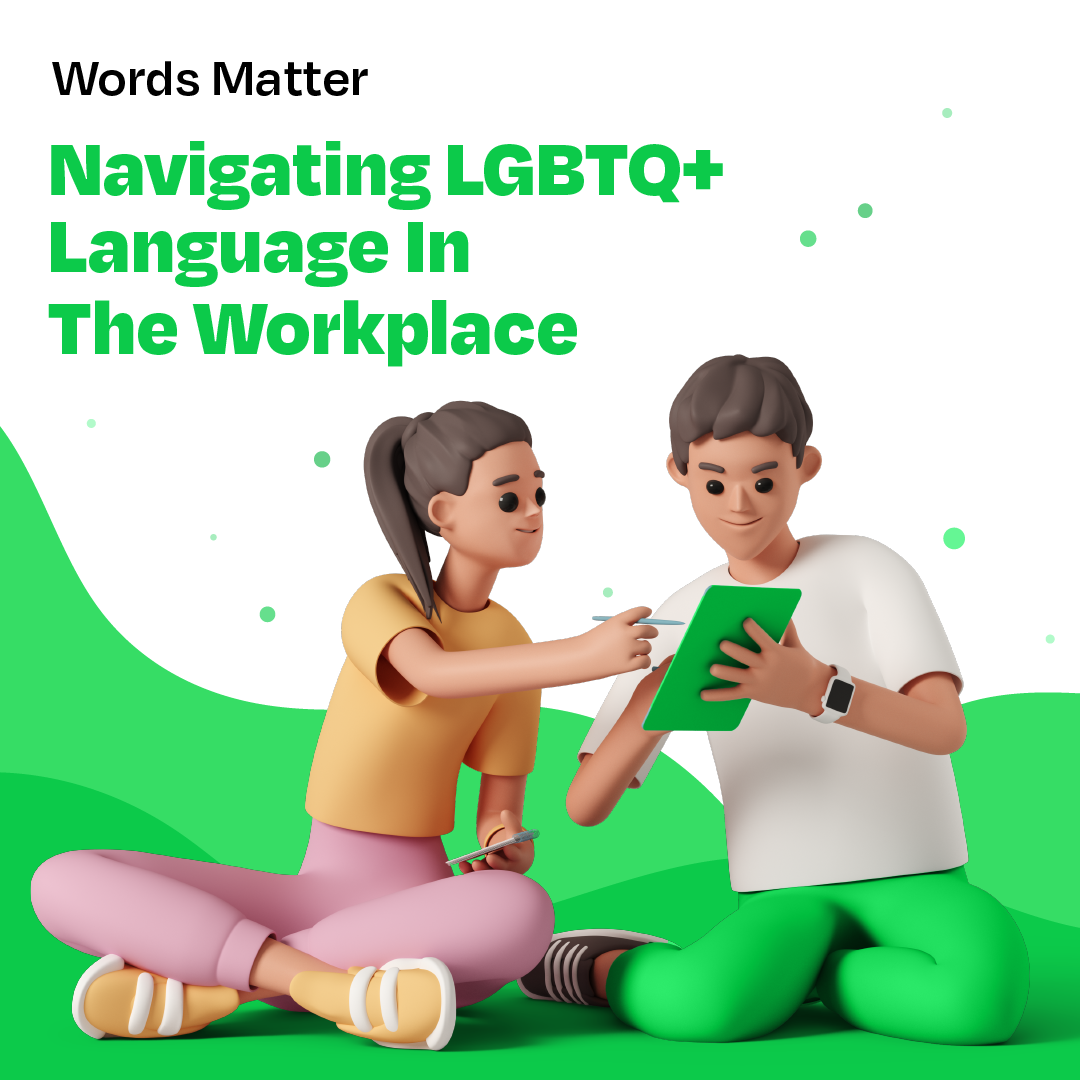Words Matter: Navigating LGBTQ+ Language in the Workplace
Words are amazing!! Language is an incredibly powerful tool that shapes our understanding of the world and the people in it.
When it comes to the LGBTQ+ community, a nuanced grasp of language and terminology is key to fostering understanding and creating a culture of inclusion.
Let’s start by saying that hardly anyone sets out to actively offend with their words. But the workplace (the world at large in fact!) is a better place when we make an effort to use language mindfully and with sensitivity,
This isn’t a definitive guide by any means, but hopefully this information will help you become more confident in navigating LGBTQ+ language and building great relationships with peers and colleagues.
Evolution of language
The LGBTQ+ community encompasses a diverse range of identities each with unique terminology. It is important to remember that language is dynamic and evolves. What was acceptable in the past might not be suitable today, so staying informed is crucial.
The term “queer” is a good example. Some in the LGBTQ+ community have reclaimed this as an umbrella term to describe sexual orientation and/or gender identity that is not straight or cisgender. However it is essential to remember that “queer” was long used as a derogatory term for the gay community. When you ask different generations within the LGBTQ+ community about this term, opinions still remain divided about its use.
Pronouns
Respecting and correctly using someone’s pronouns is a simple yet meaningful way to show support. When introducing yourself, you can state your pronouns to help foster an inclusive working environment with colleagues and clients.
The LGBTQ+ community state their pronouns more often to ensure that everyone feels they can be themselves and prevent misgendering someone who may present stereotypically different to their gender identity.
Beyond the binary of he or she, there are non-binary individuals who may use they / them pronouns. Familiarising yourself with the pronouns of your colleagues and associates and using them respectfully contributes to a more inclusive environment for all.
Many non-binary individuals may use a blend of pronouns such as he/they or they/she and it’s important to respect both (or all) of the pronouns someone has signalled to you to use them, not just the one(s) you feel most comfortable with.
It can also be helpful to include your pronouns on your email signature. There are many people who have gender neutral names (eg. Sam) who are cisgender, and this avoids making assumptions about people you may only communicate with by email.
Sexual orientation and gender identity
Another key area of understanding is the terminology around sexual orientation, gender identity and personal relationships.
Terms like gay, lesbian, bisexual, pansexual and asexual denote the different ways that people experience, or don’t experience, attraction. Recognising and using these terms accurately is an essential step towards affirming the diversity of the LGBTQ+ spectrum.
It is also critical to grasp the fundamentals of transgender terminology. Terms like transgender, cisgender and genderqueer speak to the nuances of gender identity. It’s crucial to acknowledge and respect an individual’s self-identified gender identity and recognise that it may not align with the sex assigned at birth.
Inclusive language extends to relationship terms as well. Acknowledging and respecting diverse relationship structures, such as same-sex couples or polyamorous relationships promotes an inclusive and accepting environment.
If someone uses a term to describe their identity, it is usually fine for you to use it to describe them too. However, if you think there is any chance that an individual may be offended by the use of a certain term or if you are unsure about its use, avoid using it until they tell you personally how they identify. Often those within the LGBTQ+ community will be happy to share how they identify and their pronouns, but we also must be respectful of those who may not wish to share.
Inclusive Employers have a fantastic glossary of LGBTQ+ terms to give you the words and understanding to make conversations easier.
Key takeaways!
In the discussion around LGBTQ+ language and terminology, there are three essential things to consider; if you take away anything from this blog, let this be it!
- Particular words or terminology can have different meanings to different people, and we should respect that.
- We won’t get it right all the time, so try and remain open-minded.
- When someone does get it wrong (from your perspective) make it an opportunity to invite them in rather than call them out on it.
In conclusion, understanding LGBTQ+ language and terminology is all about continual learning and growth. If we embark on this journey with humility and an open heart, we pave the way to a world where everyone is seen, heard and respected for who they are.




